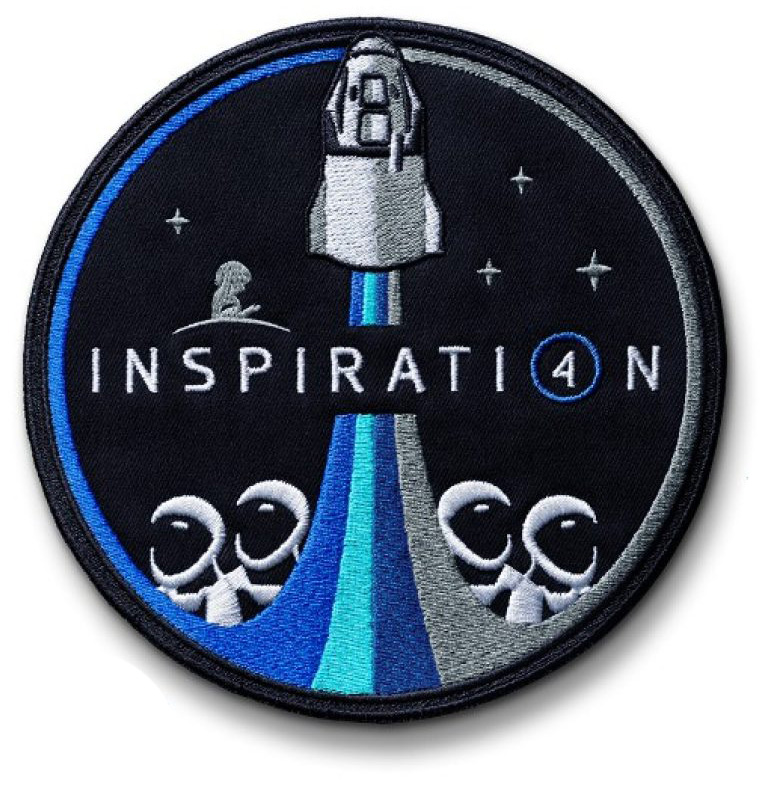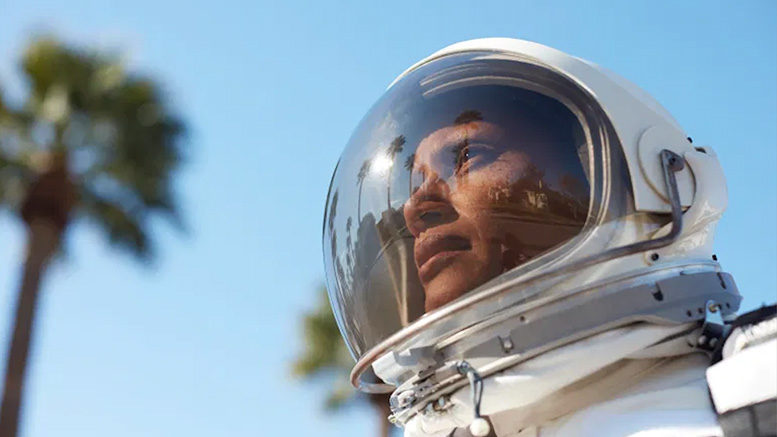Dr. Sian Proctor — geoscientist, professor, space artist.
That last one might cause you to pause, but that is exactly what the South Mountain Community College (SMCC) geoscience professor will be doing in space in a few months — writing poetry and coloring with watercolors, markers and colored pencils. And, of course, teaching students from space about Earth.
Proctor, 51, is part of the four-person crew for Inspiration4, the first all-civilian mission to space. It is operated by SpaceX and will launch no earlier than September 15 from historic Launch Complex 39A at NASA’s Kennedy Space Center in Florida. The journey into space will take three days, from liftoff to splashdown.
Proctor has served at SMCC in Phoenix, Arizona, for more than 21 years, teaching courses on physical and historical geology, planetary science, sustainable cities and more. Most recently, she was the college’s open education resource coordinator, but she is on leave now as she prepares for the journey expected later this year.
Getting ready
Currently, Proctor is also working on her artwork, getting physically fit and training for space. Right after last week’s announcement that she will join the mission, the crew flew from Florida to Pennsylvania for centrifuge training, which simulates gravitational effects. At the end of April, the team will go to Mount Rainier in Washington for more training exercises and camping along the snow line. There will also be training on jets and aboard a SpaceX simulator.
It’s like going back to school, Proctor says, which is exciting.
“It’s lifelong learning,” she says. “That’s something that I always try to instill in my students. Your education doesn’t stop when you leave my classroom.”

Proctor is aware of the misplaced stigma that is sometimes associated with community colleges, which she is more than happy to help to break. The fact that her students and others can see someone who they know accomplished such a dream is inspirational, especially for women and people of color.
“That’s powerful,” she says.
And it’s not all about space. Her Space2inspire project is geared to fuel people to blossom in their unique talents and interests. Among her goals is to inspire the next generation of explorers. Her website is chock full of inspiring photos, videos, discussions and more.
Related article: Prepared for launch
Proctor used Space2inspire as her application for Inspiration4, which was founded in partnership with St. Jude Children’s Research Hospital to raise awareness and money for the children’s cancer research organization.
The judges reviewed the top entries from the more than 200 entries coming through a Shift4Shop social media contest. Shift4Shop is an e-commerce platform founded by Jared Isaacman, who is also part of the Inspiration crew.
So close
Proctor had once before come close to heading into space. In 2008, NASA put out a call for astronauts. A friend saw it and forwarded it to her.
“I didn’t even know at the time how NASA selected astronauts. I just didn’t think it was going to be a possibility anymore in my life,” Proctor says.

However, she noticed she had all the qualifications but one: she didn’t speak Russian.
Even so, she had doubts. She felt that because she was a community college professor, and not from an internationally regarded highly selective university, they would not pick her. But what prompted her to apply were her father’s words: “Why are you talking yourself out of opportunity?”
So she applied. And she went through the year-long selection process, making the 450 “highly qualified list.” And then making the cut for 110 first-round interviews. And she was among the 47 final interviews and went through a medical check.
At the end, Proctor was not selected, but it changed her world. She went on to become an “analog astronaut,” living in moon and Mars simulations. And she continued to explore the world through science. In 2019, she spend two months with a group of science instructors studying the currents around Antarctica, as well as two weeks with faculty exploring urban sustainability in India. Proctor also has been to Chile, Poland and the far reaches of Barstow, Alaska, all in the name of science and exploration.
And now, her time has arrived.
“I’m going to space,” she says.
A rich history
Space is in Proctor’s veins. Her father, Edward Langely Proctor, was a NASA contractor who worked on the Apollo missions. One of the family’s prized possessions is a hand-written note on cardstock to her dad from astronaut Neil Armstrong: “To Ed – Thanks for all the help – Neil Armstrong Apollo 11.”
Proctor was 19 when her father passed away, but that note still inspires her. It also holds the importance of being proof that people of color worked on the space program — something that was not typically noted in the NASA archives.
“I kept looking for just one image of my father, just wishing for one thing that showed him there,” she says of her scans of the archives. “I didn’t see any people of color.”
Related article: Rocket speed to a new career
It wasn’t until the book Hidden Figures by Margot Lee Shetterly shed light of the work of colored people at NASA.
“If it wasn’t for the fact that I have this NASA memorabilia — Neil Armstrong’s autograph to my dad — no one would ever know he was a part of that and had contributed,” she says.
Proctor is proud the SpaceX mission has such diversity. It includes men and women, people of color, and individuals of various ages, from 20s to 50s. That mirrors her own “JEDI” code: a “just, equitable, diverse and inclusive” space, she says.
Looking ahead
Although much training and logistics remain, Proctor has thought about what she will do when the mission is complete. It includes returning to SMCC.
“I’m looking forward to continue to work in open educational resources, and why that’s so important,” Proctor says.
And, of course, she plans to continue with her art.

